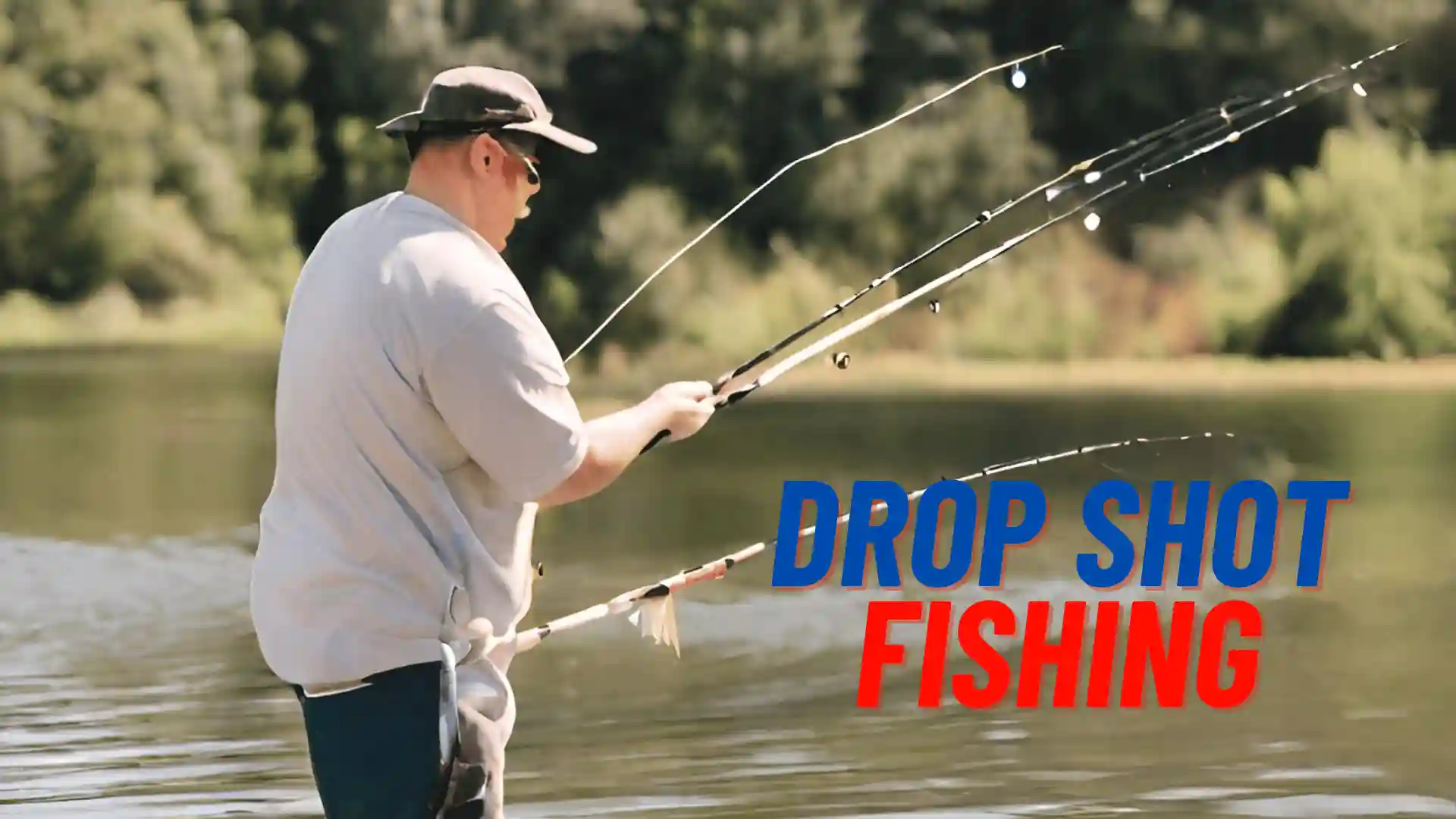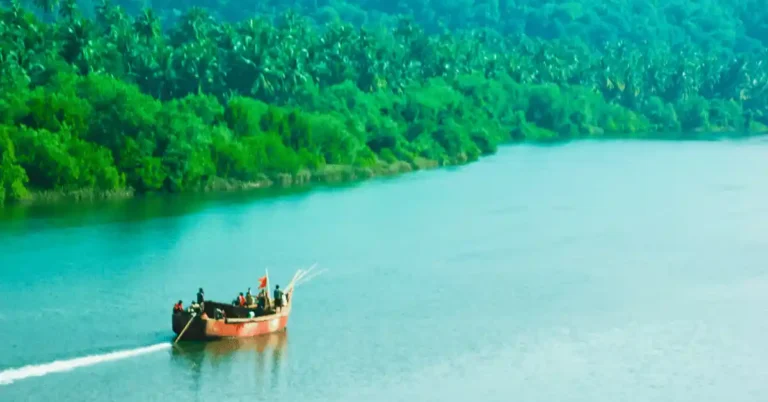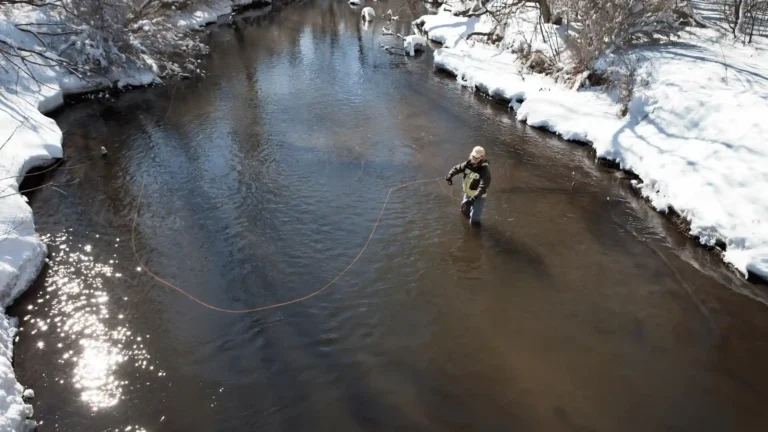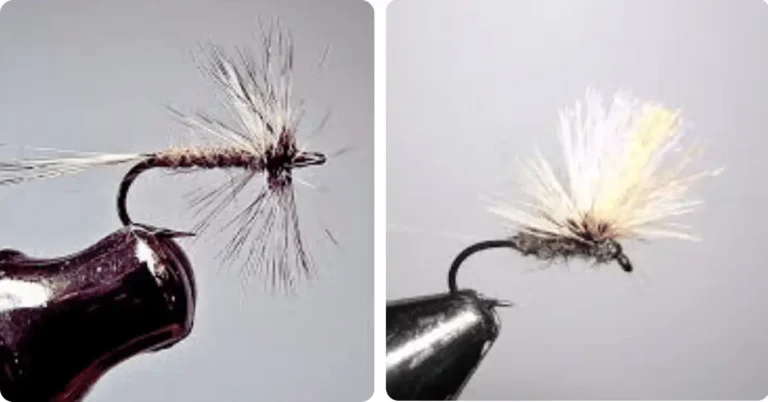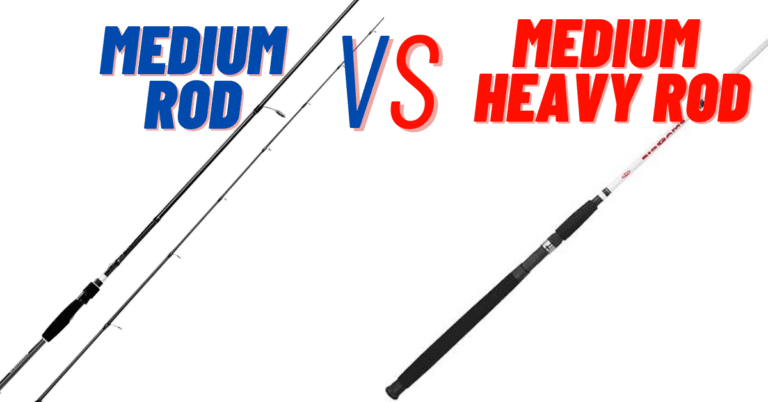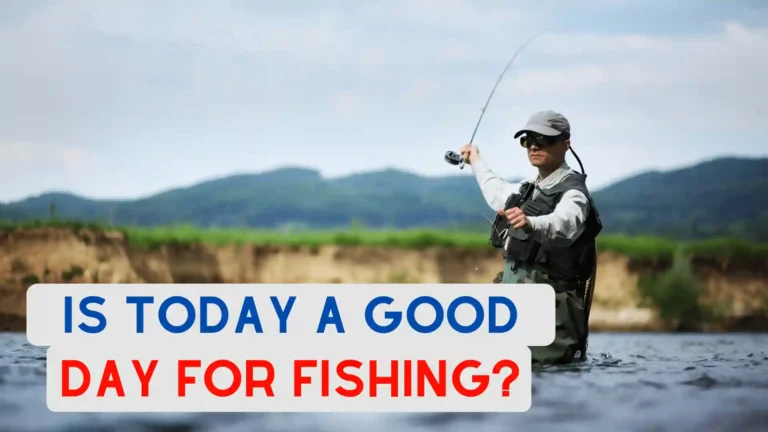Drop Shot Fishing And Rigging Tips: A Complete Beginners Guide
Drop Shot Fishing And Rigging Tips: A Complete Beginners Guide (2024)
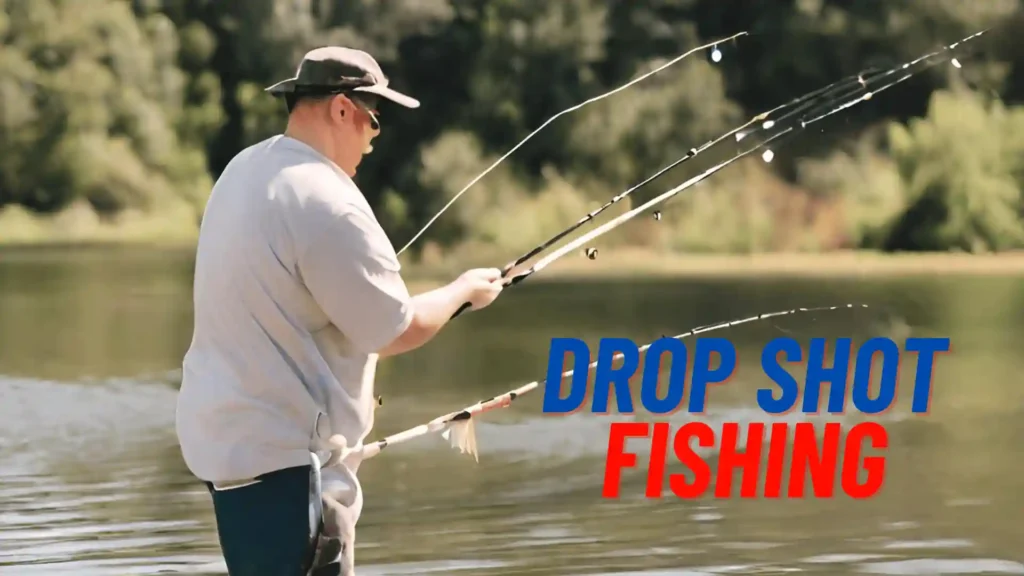
Hey there, did you know that drop shot fishing is one of the coolest and most adaptable ways to catch fish? Originating from Japan, this technique has become a hit among anglers worldwide.
Whether you’re a seasoned pro or just dipping your toes into the fishing scene, drop shot fishing can seriously up your chances of snagging a catch.
Let’s dive into the basics: setting up your gear, the tools you need, and some nifty tips to make the most out of your time on the water.
From nabbing bass in freshwater lakes to reeling in saltwater gems like snapper or flounder, drop shotting opens up a whole new world of fishing possibilities.
So, if you’re itching to level up your fishing game and land some impressive hauls, come along with me on this thrilling journey into the world of drop shot fishing!
Drop Shot Fishing 101
What is Drop Shot Fishing?
Drop shot fishing is a finesse move where you suspend your bait above the bottom. It’s perfect for targeting fish in deeper waters or when they’re not actively chomping down. With a drop shot rig, you get precise bait placement and subtle presentations
How Does it Work?
The magic lies in the setup. Instead of slapping the weight directly onto your line, a drop shot rig features a weight at the end of the line with a hook tied above it using a nifty tag or dropper loop knot. This setup keeps your bait floating above the bottom while still giving it room to move naturally and tempt those fish.
By keeping your bait raised, you can tempt fish that might be lurking just above or slightly off the bottom. This gentle approach often entices bites from picky or cautious fish that might snub other techniques.
Why Use Drop Shot Fishing?
One word: versatility. Drop shotting is like the Swiss Army knife of fishing—it works in almost any situation. Whether you’re a newbie or a seasoned angler, this technique fits the bill.
When you’re targeting fish in the deep blue sea, like offshore structures or deep channels, drop shotting lets you present your bait right where the fish are likely hanging out. You can control the depth of your bait by tweaking your leader length, giving you the upper hand.
And when the fish are feeling shy or sluggish due to weather changes or too much fishing pressure, drop shot rigs shine. The subtle movements you create by shaking or twitching your rod tip can be the difference between a day of bites and a day of disappointment.
Plus, because drop-shot rigs keep your lure floating above the bottom instead of dragging along like traditional rigs, they’re less likely to get snagged on rocks or weeds. This feature makes them perfect for fishing in areas with lots of cover or structure.
So, ready to give drop shot fishing a whirl? Trust me, you won’t regret it!
Understanding Drop Shot Fishing
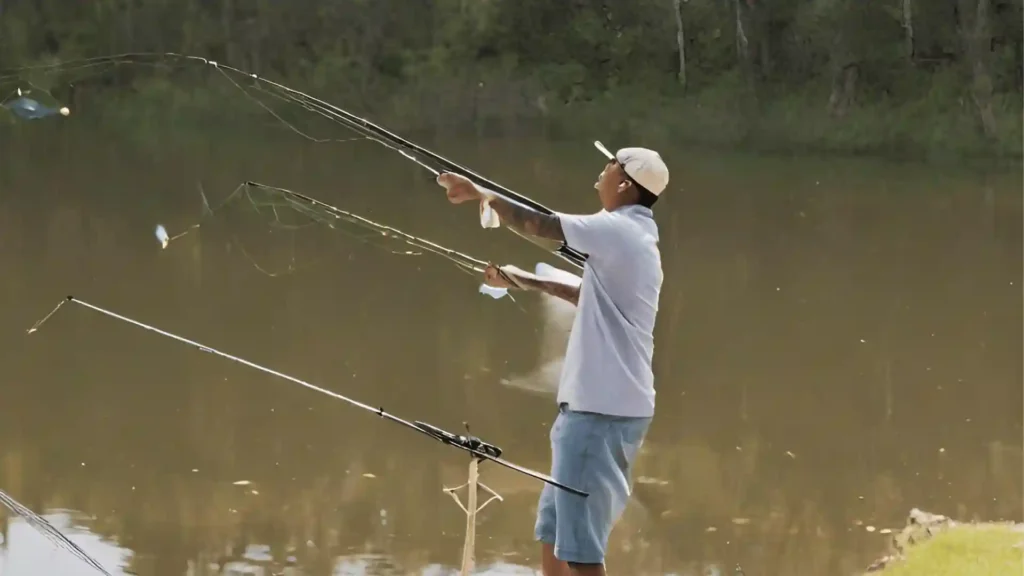
Drop shot fishing has become a favorite among anglers for its unique benefits and versatility on the water. This finesse technique offers precise bait presentation, ideal for tempting even the most cautious of fish. Whether you’re navigating deep or shallow waters, drop shot fishing adapts seamlessly to various fishing conditions, ensuring a rewarding experience every time.
Benefits of Drop Shot Fishing
The advantages of drop shot fishing are manifold, contributing to a more fruitful and enjoyable day on the water. Here’s why many anglers swear by this technique:
- Increased Sensitivity to Bites: The design of the drop shot rig enhances sensitivity, allowing anglers to detect even the subtlest of bites, leading to more successful hookups.
- Ability to Target Fish at Specific Depths: With precise control over bait placement, anglers can target fish at specific depths, maximizing their chances of landing a catch.
- Minimal Impact on Bait’s Natural Movement: The subtle presentation of the drop shot rig ensures minimal disturbance in the water, replicating natural prey movements and enticing bites from wary fish.
- Effective in Clear and Pressured Waters: Drop shot fishing excels in clear or heavily pressured waters where fish are more cautious, offering a finesse approach that often outperforms traditional techniques.
Moreover, drop shot fishing conserves bait effectively, reducing the likelihood of snagging or damage, thus optimizing fishing time and minimizing environmental impact.
This efficiency is not only good for my wallet but also for the environment, as it reduces the amount of lost tackle and potential harm to aquatic habitats.
Choosing the Right Drop Shot Rig
When it comes to drop shot fishing, selecting the right rig is crucial for success. The length of the leader is a key factor that determines how high your bait will suspend off the bottom. Typically, this ranges from 1 to 5 feet, but it can vary based on the conditions you’re fishing in.
Selecting the appropriate rig is paramount for successful drop shot fishing. Consider these key factors when assembling your rig:
- Leader Length: Adjust the length of your leader to the fishing conditions, aiming for a balance between bait suspension and bottom contact.
- Hook Selection: Match your hook size to the bait profile, ensuring a natural presentation and secure hookups. Popular choices include finesse hooks for smaller baits and larger hooks for more substantial profiles.
- Weight Consideration: Choose a weight that maintains contact with the bottom while allowing for natural bait movement. Adjust weight according to water depth and current conditions.
Experimentation with different configurations allows anglers to fine-tune their rigs for optimal performance, whether fishing rocky terrain or weedy areas.
Best Baits for Drop Shot Fishing
The choice of bait significantly influences drop shot fishing success. Soft plastic baits are favored for their lifelike movement and versatility. Consider these top bait options:
- Worms: Finesse worms or straight-tail varieties are highly effective in enticing a wide range of fish species.
- Minnows: Soft plastic minnow imitations mimic natural prey, appealing to various fish species.
- Creature Baits: Creature baits offer versatility and can be particularly effective when targeting bass.
Adapting bait selection to match local prey species increases the likelihood of success. Experimenting with colors and scents allows anglers to fine-tune bait presentation based on prevailing conditions.
Incorporating emergers, effective for trout fishing, adds another dimension to drop shot fishing, catering to diverse water conditions and species preferences.
Drop Shot Fishing Techniques
When it’s time to put your drop shot rig to work, mastering casting and retrieving is essential for reeling in those prized catches. Let’s break down the steps to ensure your success:
Casting and Retrieving
- Precision Casting: Aim your cast towards your target area with precision, especially if you’re aiming for structures where fish like to lurk. Accuracy is key to placing your bait in the sweet spot.
- Subtle Presentation: After casting, allow your weight to settle on the bottom before gently tightening the line. This is where finesse comes into play—use subtle rod movements to infuse lifelike action into your bait.
- Slow and Methodical Retrieve: Retrieve your line slowly, pausing at intervals to let your bait hover enticingly. Mimicking wounded or effortless prey is the name of the game here, so keep the pace leisurely.
Adjusting your retrieval speed and incorporating pauses can make all the difference. Pay attention to any feedback from your line, as even the slightest twitch could signal a potential bite. Don’t hesitate to experiment with various techniques until you find what clicks best with the conditions and the fish you’re targeting. And hey, fishing apps can be your best friend, offering valuable insights on weather, tides, and fish locations to fine-tune your approach.
Working the Drop Shot Rig
When you’re in the zone with drop shot fishing, it’s all about finesse and subtle maneuvers. It’s not just about dropping your bait and crossing your fingers; it’s about infusing it with lifelike action that fish simply can’t resist.
Mastering the drop shot rig involves making minute adjustments to entice those bites. Whether it’s a gentle twitch of the rod tip or a slow, deliberate retrieve, each action can provoke a strike depending on the mood of the fish.
Here’s a playbook of actions I swear by when working the rig:
- Give the rod tip a slight shake for a quivering motion.
- Hold the rod steady to let the bait settle and entice cautious predators.
- Slowly drag along the bottom to mimic foraging prey.
Inspired by legends like VanDam, I tweak my weight selection based on depth and fish activity levels. For instance, in shallow waters, opting for a lighter weight maintains that delicate presentation.
Adjusting Depth and Presentation
Fine-tuning the depth and presentation of your bait is where the magic of drop shot fishing truly shines. By varying the length of the leader between the weight and the hook, you can precisely position your bait where the fish are most active.
- Short leader: Ideal for enticing bottom-hugging fish.
- Medium leader: Perfect for targeting suspended fish in mid-water.
- Long leader: Best for luring fish feeding near the surface.
Remember, the goal is to keep your bait looking as natural as possible. Observe fish behavior and water conditions closely, and don’t hesitate to make subtle rig adjustments based on what you see.
Drop shot fishing is all about versatility. Experiment with different weights, hook sizes, and bait types until you uncover the irresistible combination that hooks those elusive fish every time.
different weights, hook sizes, and baits until you find the perfect combination that the fish simply can’t resist.
Drop Shot Fishing Tips
Reading the Water
When I’m out on the water, I’ve learned that being able to read the water is crucial for successful drop-shot fishing. It’s about understanding where the fish are likely to be and how they’re behaving. I start by looking for subtle signs on the water’s surface, such as ripples or disturbances that could indicate fish activity below.
- Look for areas with noticeable current changes or eddies.
- Pay attention to water clarity and color changes.
- Observe for any baitfish activity on the surface or birds diving, as these can point to the presence of predatory fish.
By taking the time to read the water, I can make informed decisions about where to cast my drop shot rig. It’s a methodical approach that often pays off with more bites and better catches.
Remember, the key is to fish the drop shot rig with a slow, hesitant retrieve, incorporating plenty of pauses and small twitches. This technique allows me to cover the water thoroughly and at different depths, adapting my approach as I interpret the water’s story.
Patience and Persistence
In the world of drop-shot fishing, patience is more than a virtue; it’s a necessity. You’ll often find yourself waiting for that subtle bite, and it’s crucial not to rush. Remember, the finesse approach of drop shot fishing means that fish may take longer to commit to the bait.
- Observe the behavior of the fish and adjust your technique accordingly.
- Stay vigilant and maintain focus, even during slow periods.
- Resist the urge to constantly change spots; give each location ample time.
Success in drop-shot fishing doesn’t always come quickly, but persistence pays off. It’s about the slow and steady refinement of your technique and the understanding that not every cast will bring a fish, but every cast is an opportunity to learn and improve.
Understanding the seasonal patterns of fish can be a game-changer. As an author at Kayak Fishing Focus once noted, bass tends to gather in specific areas as water temperatures drop, making them more predictable. This insight is a testament to the importance of patience and persistence in adapting to these patterns for successful drop-shot fishing.
Adapting to Conditions
When I’m out on the water, I’ve learned that being adaptable is key to successful drop-shot fishing. Conditions can change rapidly, and what worked one hour might not work the next. I always pay close attention to the wind, water clarity, and temperature changes, as these can all affect fish behavior.
- Monitor the wind direction and speed; it influences water currents and baitfish movements.
- Keep an eye on water clarity; it dictates how visible your bait is to fish.
- Note temperature changes; fish may move to different depths as the water warms or cools.
By staying observant and willing to adjust my tactics, I’ve often turned a slow day into a productive one. Sometimes, it’s as simple as changing the weight size to maintain the right presentation or switching to a more subtle bait color to match the water conditions.
Remember, the more you’re willing to adapt, the more you’ll learn about the nuances of drop-shot fishing and the better angler you’ll become.
Drop Shot Fishing Gear
Drop Shot Fishing Gear Essentials
When it comes to drop shot fishing, your choice of gear can make or break your day on the water. Let’s dive into selecting the perfect rod, reel, line, and hooks to set you up for success.
Rod and Reel Selection
- Sensitive Rod with Fast Action: Opt for a rod that’s both sensitive and responsive, allowing you to detect even the faintest of bites and react swiftly. Look for a 6’6″ to 7′ rod with a fast action—perfect for maintaining control and feeling those subtle taps.
- Spinning Reel Ease: Pair your rod with a spinning reel for effortless casting and smooth line management. A size 2500 to 3000 spinning reel strikes the right balance between line capacity and maneuverability.
Line and Leader Choices
- Braided Main Line for Sensitivity: Choose a braided line for your main line to maximize sensitivity and reduce stretch. Braided lines like the 16-pound Sunline SX1 offer superior feel, essential for detecting those gentle strikes.
- Fluorocarbon Leader for Stealth: Tie a fluorocarbon leader to your braided main line for stealth and abrasion resistance. Opt for 6 to 8 feet of 8-pound fluorocarbon, providing invisibility underwater and enough flexibility during the fight.
Weights and Hooks for Drop Shot Fishing
Weights and Hooks for Drop Shot Fishing
- Matched Weight to Conditions: Select weights that match your fishing conditions—lighter weights for shallow or pressured waters and heavier ones for deeper or swift currents. Aim for a versatile range from 1/8 to 1 oz to adapt to varying scenarios.
- Hook Size and Shape: Match your hook size and shape to the bait you’re using. Opt for smaller hooks for finesse baits and larger ones for bulkier profiles. Ensure your hooks are sharp and appropriate for the bait type to maximize hookups.
- Experiment and Adapt: Experiment with different weights, hook styles, and bait presentations to find what works best for your target species and fishing environment. Stay adaptable and adjust your setup based on prevailing conditions to stay one step ahead of the fish.
By fine-tuning your drop shot fishing gear selection to suit your preferences and fishing conditions, you’ll enhance your chances of success and reel in more impressive catches. So, gear up, hit the water, and let the drop shot magic unfold!
Drop Shot Fishing Locations
Finding Ideal Drop Shot Spots
When I’m on the prowl for the ultimate drop-shot haven, I scout out spots that blend depth with structure, offering an ideal ambush zone for predatory fish.
Here’s what I keep an eye out for:
- Transition Zones with Bottom Variations: Seek out areas where the bottom makeup shifts—a prime spot for fish to lurk and strike.
- Points and Drop-offs for Depth Diversity: Explore points and drop-offs that create depth changes, enticing fish seeking refuge or foraging opportunities.
- Submerged Hideouts like Vegetation and Brush Piles: Target submerged vegetation and brush piles—a haven for fish seeking cover and prey.
- Rock Piles and Boulder Fields: Scout out rock piles and boulder fields, offering ample hiding spots and feeding grounds for hungry fish.
Remember, precision is paramount in drop shot fishing. Identifying the right location is just as critical as mastering the technique itself.
Once I’ve locked onto a promising spot, I rely on my trusty electronics to confirm fish presence. It’s a waiting game, but that telltale tug on the line makes every moment worthwhile.
Understanding Structure and Cover
When I approach a new fishing ground, my first order of business is to decode the underwater landscape, understanding both structure and cover—the twin pillars of fish-holding havens.
- Deciphering Structure: Structure reveals the physical contours of the water body—think drop-offs, humps, and troughs—dictating fish movement like a highway.
- Unlocking the Power of Cover: Cover, on the other hand, offers refuge and sustenance for fish, encompassing vegetation, rocks, and artificial structures.
With the aid of my electronics, I chart out these features, envisioning how fish might navigate and relate to them. For instance, during the pre-spawn period, bass often congregate on secondary points leading to spawning flats—a vital nugget of knowledge for successful drop shot fishing.
It’s crucial to stay attuned to seasonal shifts in fish behavior and adapt our approach accordingly. Flexibility is key to unlocking the full potential of structure and cover throughout the year.
By honing in on prime drop shot locations and understanding the intricate dance between structure and cover, I set the stage for unforgettable fishing adventures, one cast at a time. So, gear up, venture forth, and let the thrill of drop shot fishing unfold in the heart of nature’s embrace!
Seasonal Considerations for Drop Shot Fishing
As I’ve honed my drop-shot fishing skills, I’ve come to understand that each season brings its own rhythm to the underwater dance—shaping fish behavior and habitat preferences along the way.
- Spring: With the arrival of spring, bass make a beeline for shallower waters, gearing up for the spawning spectacle. It’s prime time for finesse drop shot tactics, targeting bedding fish in the shallows.
- Summer: As temperatures rise, fish seek refuge in cooler, deeper waters. Here, a well-placed drop shot rig becomes your secret weapon, probing the depths around submerged structures and thermoclines for elusive bites.
- Fall : Fall ushers in a season of change, as fish ramp up their feeding frenzy ahead of winter’s chill. It’s a time ripe for experimentation, where varied baits and presentations can unlock the key to a bountiful catch.
- Winter: In the depths of winter, fish hunker down in deep-water sanctuaries, bracing against the cold. While a traditional lift-and-drop technique may suffice, a slower, more methodical presentation reigns supreme—especially when the barometric pressure takes a dip. Sometimes, a typical 3 to 4-foot lift-and-drop technique would be helpful, but when the barometric pressure drops, slowing down your presentation can make all the difference.
Seasonal Tactics at a Glance:
- Spring: Embrace the shallows, finesse is the name of the game.
- Summer: Dive deep, focus on structures for cool comfort.
- Fall: Ride the transition wave, explore diverse bait options.
- Winter: Plummet to the depths, slow and steady wins the race.
Conclusion
In conclusion, drop shot fishing is a versatile and effective technique that can help you catch more fish in a variety of conditions. By mastering the drop shot rig, understanding the right gear and bait to use, and practicing your technique, you can become a successful drop shot angler. Remember to experiment with different setups and adapt to the conditions on the water to maximize your chances of success. So, grab your gear, hit the water, and start drop shot fishing like a pro!
Frequently Asked Questions
What is drop shot fishing and how does it work?
Drop shot fishing is a finesse technique where the weight is positioned below the bait, allowing the bait to float above the bottom. This setup entices fish to strike while keeping the bait in the strike zone longer.
What are the benefits of using a drop shot rig?
Drop shot fishing offers precise bait presentation, versatility in depths, and the ability to target suspended fish. It is also effective in clear water and when fish are finicky.
How do I choose the right drop shot rig for different conditions?
Select the weight size based on depth and current, match the hook size to the bait, and adjust the leader length to target fish at specific depths. Experiment with different rig setups to find what works best.
Which baits are best for drop shot fishing?
Popular baits for drop shot fishing include finesse worms, small creature baits, and minnow imitations. Soft plastics that have natural movement and mimic baitfish are often successful.
What are some key casting and retrieving techniques for drop shot fishing?
Cast beyond the target area, let the bait sink to the desired depth, and use a slow, subtle retrieval motion to maintain the bait’s position in the strike zone. Pay attention to any subtle bites or changes in weight.
How can I effectively work the drop shot rig to attract fish?
Use a gentle shake or twitch of the rod tip to impart movement to the bait. Vary the cadence and intensity of the movements to trigger a reaction from fish. Keep the line taut to feel for bites.
What should I consider when adjusting the depth and presentation of the drop shot rig?
Experiment with different leader lengths to target fish at various depths. Adjust the weight size to control the sinking rate and keep the bait in the strike zone. Modify the presentation based on fish behavior.
How do I read the water to find ideal drop shot fishing spots?
Look for changes in water depth, structure, and cover that attract fish. Pay attention to current breaks, underwater vegetation, and baitfish activity. Use a fish finder to locate schools of fish.

Meet Ibrahim Khan, an avid angler and author in Fishing Teach. He shares his wealth of knowledge from his 16 years of experiences in fishing. His articles are a captivating blend of practical insights and thrilling tales that invite readers into the enchanting world of fishing.
Ibrahim’s guides are your go-to guide in the realm of fishing on this informational site. Hailing from a coastal paradise, Ibrahim’s passion for angling is the heartbeat of his life.

